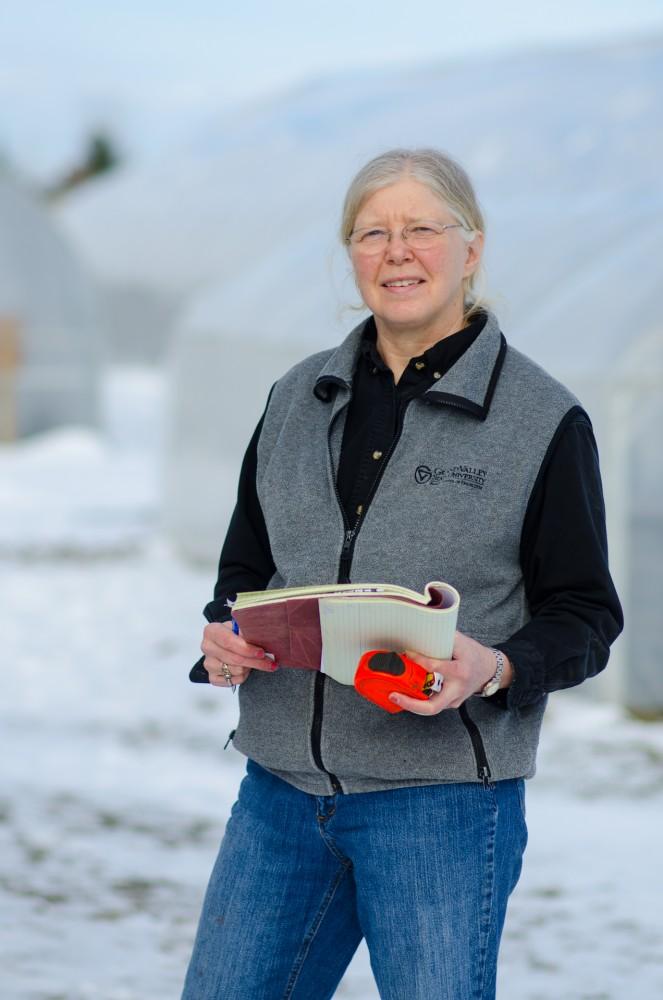Engineering students put theory to practice at Wesley House

GVL/Bo Anderson Shirley Fleischman
Mar 27, 2013
Shirley Fleischmann, a professor of mechanical engineering at Grand Valley State University, guided three students to conduct an energy efficiency audit on the Wesley House near GVSU’s Sustainable Agriculture Project on March 22.
“The big thing we’re looking for is how much insulation there is, how much energy is used in the house, and how much energy is being lost in the house,” Fleischmann said. “We used our thermal imaging camera and determined that there’s almost no insulation in the walls.”
The thermal imaging camera shows areas on the walls that are cold due to heat escaping through the walls. Warm areas show up red, cool ones are yellow, and cold ones are blue. The studs in the walls showed yellow, Fleischmann said, but the spaces between them were blue, indicating a lack of insulation and gaps in the thermal envelope.
“The thermal envelope is everything between the heated areas inside and the cold areas outside,” she said. “We’d like to see that as tight as possible.”
The students involved in the audit were Christopher Koppenaal, Mitch Weber and Bill Madsen, all of whom are senior engineering students and members of Fleischmann’s Urban Sustainability and Heat Transfer classes.
“I did (enjoy auditing the house),” Koppenaal said. “It was a good experience to learn and perform some of the practical applications of material taught in both Urban Sustainability and Heat Transfer. All three students in our group worked together to take wall, window and door dimensions of the inside of the house and we will use this data to construct a model of the heat transfer from the inside of the house to the outside environment.”
The double-credit project was created for these three students so they could avoid doing redundant homework over the rest of the semester.
“This is a combination project for the urban sustainability class, which is more of a gen ed class, versus heat transfer, which is the other class it counts for,” Madsen said. “The homework we’re currently doing for the rest of the semester is stuff we did a year and a half ago, so the professor didn’t think we needed to do it all again, so she came up with the project so that we didn’t have to do it all over again.”
There are further calculations needed to complete the audit, but for now, there are some recommendations Fleischmann can see her students making to the university to improve the building.
“The easiest thing to do is to go up into the attic and put insulation in,” she said. She will encourage her students to recommend putting insulation in the walls as well, which is a more complicated process. She also recommends the addition of newer, better windows.
“Several of the windows were the old style, which had only one pane, as opposed to the new style, which have two panes,” Madsen said. “The double-paned windows are much more efficient.”
Fleischmann also recommends solar panels.
“If you’d like to see a zero-energy house, you almost always need to have solar panels,” she said.
For more information on the Wesley House, visit www.gvsu.edu/sustainableagproject/.
[email protected]






















